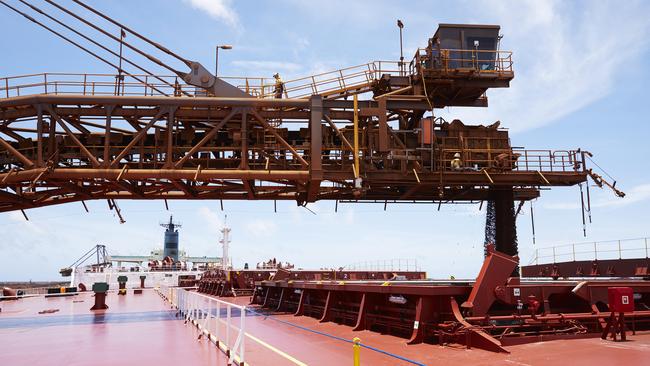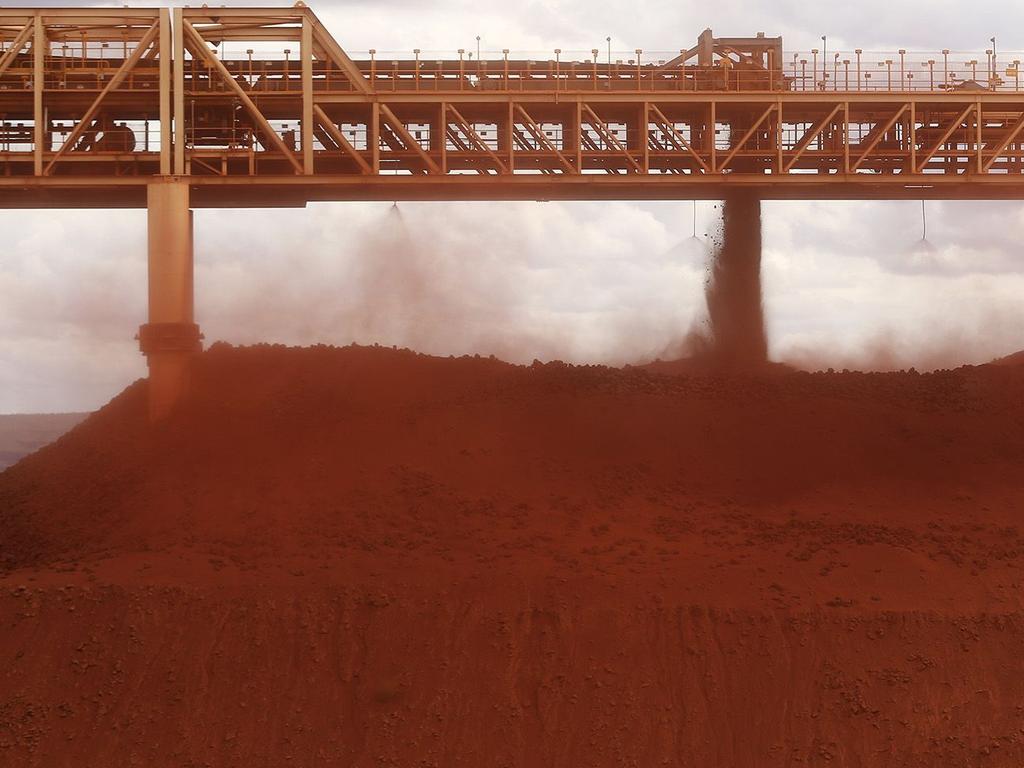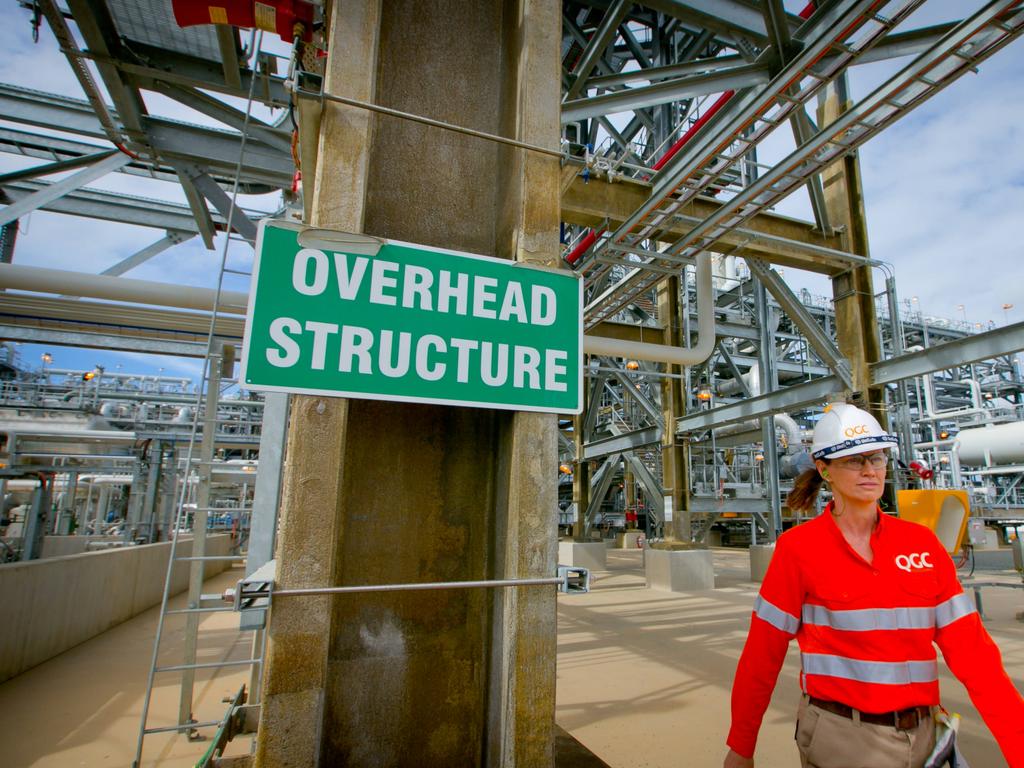Iron ore hits six-year high on Brazil cuts
Fortescue shares jumped above $20 on Thursday as another downgrade from Vale put a rocket under the shares of Australian iron ore producers.

Fortescue Metals Group shares jumped above $20 on Thursday as another downgrade from Vale boosted the iron ore price and put a rocket under the share prices of Australian producers.
Fortescue’s 13.2 per cent jump, to a closing price of $20.65, added another $1.5bn to the net worth of founder Andrew Forrest, who now owns $23bn worth of Fortescue shares, with Vale’s downgrade offering the prospect of more eye-watering dividends for the iron ore magnate, as well as some budget relief for federal Treasurer Josh Frydenberg.
The value of Australian iron ore miners surged on Thursday after the commodity price hit a fresh six-year high, as Brazilian iron ore giant Vale cut annual output expectations again and flagged only a limited lift in production in 2021.
Overnight on Wednesday Vale cut 2020 production guidance to a range of 300 million to 305 million tonnes, down from previous expectations of between 310 million and 330 million tonnes.
Vale said it expected 2021 output to rise to between 315 million and 335 million tonnes.
The benchmark price for iron ore immediately surged on the news, topping $US136.75 a tonne and hitting fresh six-year highs on the expectation of supply shortages in the first quarter of next year as China’s steel industry powers ahead.
Vale’s ongoing woes are likely to further bolster the earnings of BHP, Rio Tinto and Fortescue, along with smaller Australian miners such as Mineral Resources and Mount Gibson Iron, which have already cashed in on high iron ore prices over the last two years.
Fortescue closed up 13.2 per cent or $2.42 to $20.65, with Rio up 6.9 per cent or $7.21 to $112.20 and BHP up 4.9 per cent or $1.94 to $41.25.
Vale put in a strong third-quarter performance and analysts had tipped its annual output at about 310 million tonnes, with the expectation the company would return another 40 million tonnes to the seaborne market in 2021 as it ramped up production at Brazilian mines curtailed by the tailings dam disaster in 2019.
But Vale’s iron ore boss Marcello Spinelli told analysts heavy recent rains and delays in obtaining a regional licence at one of its mines had forced the company into its latest downgrade.
Mr Spinelli said Vale’s 2021 guidance was “conservative”, with the company saying it expected to reach annual production capacity of 350 million tonnes from its mines by the end of 2021, and 400 million tonnes by the end of the following year.
RBC Capital Markets resources analyst Broda Tyler said he expected a shortfall in iron ore supply in 2021, with markets to “stay in a very tight position” for at least another six months.
“In our view, this will likely serve to drive expectations of both consensus iron ore prices higher, but also the willingness for the market to price these cashflows into the equities,” he said.
“We currently model a 2 per cent deficit in iron ore markets for 2021. This follows 2 years of deficit and has the potential to unwind port inventories in China to levels last seen in 2015 (and that was with a China consuming circa 750 million tonnes of finished steel versus current 950 million tonnes). With October steel production growth rates in China running at an astonishing 15 per cent year-on-year our 2.3 per cent increase for China 2021 growth also implies a dramatically slowing consumption rate. And we are 23 per cent ahead of consensus iron ore price forecasts at $US122 a tonne.”
The strengthening iron ore price will also put a smile on the face of Mr Frydenberg as the rivers of cash rolling into iron ore miners flow through to Treasury coffers in the form of company taxes, offering to repair some of the budget damage inflicted by the coronavirus pandemic.
Treasury had tipped iron ore prices, before freight costs, to fall to $US55 a tonne by the end of June 2021, effectively building in an average price of about $US63 a tonne for the year.
With freight costs down at about $US7 a tonne, current prices are about $US65 above that level — with each $US10 a tonne above Treasury’s average worth about $300m in tax receipts this financial year. October trade data from the Australian Bureau of Statistics, released on Thursday, showed the value of Australian iron ore exports hit a record $11bn for the month, up by 4.1 per cent month-on-month and 43.9 per cent compared to a year ago.
Iron ore fever even took hold at the junior end of the market, with WA iron ore hopeful Fenix Resources shares shooting up more than 23 per cent to close at 21c on Thursday after the company executed a perfectly timed agreement with the Port of Geraldton to access up to 1.2 million tonnes of export capacity, putting it within reach of becoming an exporter.






To join the conversation, please log in. Don't have an account? Register
Join the conversation, you are commenting as Logout